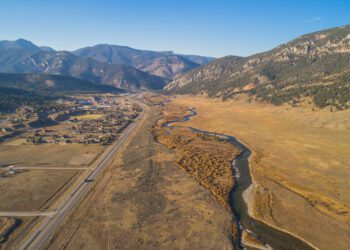By Ted Williams WRITERS ON THE RANGE
Three percent of Earth’s land mass is comprised of islands, but 95 percent of all bird extinctions have occurred on them. Main cause: Mice and rats introduced by humans.
Only 10 percent of the world’s islands are rodent-free, but a rodenticide called brodifacoum is changing that. On hundreds of treated islands recovery of native plants and wildlife has been swift and spectacular.
Consider rugged, 1,450-square-mile South Georgia Island in the Subantarctic. Before mice and rats disembarked from whaling vessels it had been Earth’s richest seabird rookery. For three years it’s been rodent free thanks to a $13.5 million project in which brodifacoum was applied by helicopters. All 33 bird species are surging back. South Georgia pipits, for example, had been virtually eliminated; now their vocalizing drowns out the roaring of elephant seals.
On the U.S. National Wildlife Refuge of Palmyra in the South Pacific rats killed millions of seabirds representing 10 species, decapitated hatchling sea turtles, decimated 10 species of land crabs and consumed seeds of imperiled Pisonia trees, halting all reproduction. Today the entire ecosystem has recovered thanks to brodifacoum treatment in 2011.In 2012 the estimated rat population on the Galápagos island of Pinzón was 18 million. All Pinzón giant tortoises hatched there were at least 150 years old because rats had eaten juveniles. In December of that year brodifacoum killed every rat. Within months hatchling Pinzón tortoises appeared for the first time in a century and a half – produced by animals raised and repatriated by the Santa Cruz Tortoise Center.
On the Farallon Islands National Refuge, 27 miles off San Francisco, mice introduced by sealers threaten to extirpate 4000 ashy storm-petrels – half the planet’s population. In autumn the ground undulates with mice. Sit down, and they crawl all over you.
Before mice infested the refuge burrowing owls rested briefly on their fall migration. Now they linger into winter, gorging on mice. With seed shortage mice turn to cannibalism, then starve, so owls switch to ashy storm-petrels. Enough mice survive that their population explodes again when new seeds appear.
Meanwhile mice expose sea lions and seals to deadly pathogens, spread seeds of invasive plants, devour pollinators of native plants and consume two rare species found nowhere else — Farallon camel crickets and Farallon arboreal salamanders.
Since 2004, the U.S. Fish and Wildlife Service has tried to restore ecological health to the Farallons, but it’s continuously intimidated by opponents of all poisons in all situations.
To restore island ecosystems brodifacoum applied by trained wildlife professionals is an absolute necessity. But brodifacoum abused by the public is an absolute disaster for mainland ecosystems. These are two thoughts opponents of island recovery can’t grasp simultaneously.
Animal-rights activist Maggie Sergio proves the old saw that one concerned citizen can make a difference. She proves also that this isn’t always a good thing.
Sergio has whipped the City of San Francisco, the California Coastal Commission and the public to a froth of fear and loathing. Her online petition against the project has 39,000 signatures.
Sergio’s screeds in the Huffington Post and elsewhere include such fiction as: “1.3 metric tons of brodifacoum” will be dropped by helicopter. There isn’t enough brodifacoum in the world to drop 1.3 metric tons; 1.54 ounces would be dropped, this to be mixed with 1.3 metric tons of grain. And: “The pesticide label for ‘Brodifacoum 25’ indicates that up to 24 pounds per acre will be applied.” No, “Brodifacoum 25” contains 25 parts brodifacoum per million parts grain.
These and other untruths are recycled by the media, the Coastal Commission, the city, WildCare and the Ocean Foundation. One might suppose that the foundation would defend ocean mammals and rare ocean birds. Instead it frets about imagined cruelty to mice and possible by-kill of super-abundant western gulls.
The Fish and Wildlife Service doesn’t need permission from state bureaucrats to manage wildlife belonging to all Americans. But scolded by the Coastal Commission, it’s re-revising plans it has revised and re-revised for 17 years.
Zach Warnow of Point Blue Conservation Science retains hope: “I don’t think we’ll win over opponents; but we’ll get this message to the undecideds: We’re in a time when people are doubting scientists, and we need to get back to trusting the scientific process that’s been so well represented in this project.”
The Service will again plead its case to the Coastal Commission at a hearing tentatively scheduled for May. Comments should be sent to: farallonislands@coastal.ca.gov
Ted Williams is a contributor to Writers on the Range, writersontherange.org, a nonprofit dedicated to spurring lively conversation about the West. He writes about wildlife for national publications.











